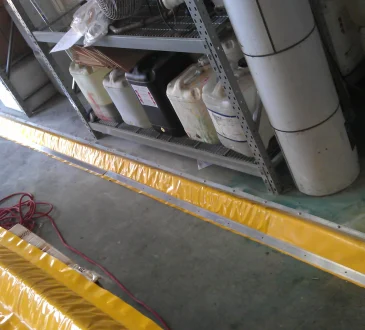
A smartwatch tracks your 10,000 steps. When you leave the room, a thermostat switches off the air conditioning. This smart technology is known as IoT, and we’re seeing more and more applications for a better life. Because the application cases are virtually limitless, the IoT solutions industry is quickly developing. According to various research, IoT solutions could enable $5.5 trillion to $12.6 trillion globally by 2030.
Industrial IoT (IIoT) is used by manufacturers to monitor machines remotely. As a result, IIoT reduces waste, improves building quality, and saves energy. When IoT is combined with AI and 5G, the possibilities are limitless. IoT platforms and technology are rapidly evolving, and some of their applications are surprising. Here are four intriguing applications of IoT.
- Farming is more innovative, not harder
To fulfill the rising population’s food demands, tech-forward farms use IoT platforms to collect real-time soil quality and crop growth data. IoT solutions can also forecast crop output and monitor livestock health. This information also aids in the reduction of valuable resource waste during a period of water constraint.
Many software uses IoT platforms to assist small-scale farmers in sharing resources. Tractor owners can use IoT solutions to collect engine data, ignition status, battery power, and operator performance. The truck owners may then automatically use the money earned when local tractor owners rent out their equipment to other farmers to pay down the tractor loan.
- Making hotel stays smarter
According to a recent PwC survey, 70% of hospitality executives have active IoT initiatives, compared to 48% of executives in other industries. Most of their projects aim to improve customer experience, security, and asset management.
When a room is ready for cleaning, occupancy IoT platforms can notify housekeeping. When no one is in the room, smart heating systems and occupancy sensors can maintain a steady temperature and turn off thermostats and HVAC systems. When connected room service trays need to be picked up, ioT solutions can notify staff.
- Sensors in forests reduce illegal logging
Organized criminal networks frequently commit environmental crimes that employ sophisticated machinery for large-scale operations like logging. These criminal networks are also intimately linked to groups that disrupt fragile environments worldwide.
Several companies have created smart forests using IoT solutions. There are embedded IoT acoustic sensors in the forest that listen to logging sounds. The IoT platform used to make it then sends real-time notifications with geographical information to a forest administrator’s or ranger’s phone app, allowing them to intervene instantly.
- IoT helps make better beer
Various IoT platforms are employed in practically every facet of production. Manufacturers can use thermal imaging to monitor the build quality of sealed goods such as motherboards and avoid potential fires. Many breweries employ AI and IIoT to monitor beer quality. The beer bottle fill levels caused excessive foaming, which in turn caused excessive dissolved oxygen in the beverage. Too much oxygen in the beer degrades the flavor and shortens its shelf life.
The spilling problem cost $30,000 per month until an IIoT system was implemented. With cameras and IIoT, it is now on track to save significant money. The applications of IoT platforms are limitless; we have only scratched the surface of what is to come. If something can be measured, IoT can assist in data collection. When 5G and AI are added to the equation, the technology becomes a force that will transform the global economy.
Final Words
IoT platform provides enterprises with real-time information and business insights that, when implemented, can help them become more productive.
Get inspired by Akenza-powered IoT solutions. IoT solutions that enable an agile approach to development and innovation are required in today’s highly volatile technology environment. The possibilities for connecting the world around us are limitless. It is a matter of awareness, expense, and complexity. We are confident that by significantly lowering the work and complexity that businesses face when developing IoT solutions, we will be able to steer the Internet of Things movement toward broad market application.




